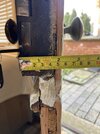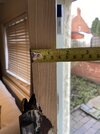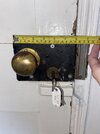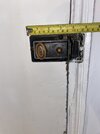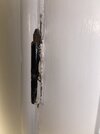I am looking at restoring a very old front door, not sure exactly of the age but it is rather wrecked including the locks. I’m not sure if it’s even possible to restore it looks like previous owners have done numerous DIY jobs on it already.
I’d like some help regarding the locks as I’m not sure what I need to buy.
Both locks are so worn. I’d like to restore this door and add new locks rather than buy a new door if possible
We have never used this door as a main entrance as we have another door but I would like to start using it.
Any help, advice or recommendations would be much appreciated.
Many thanks








I’d like some help regarding the locks as I’m not sure what I need to buy.
Both locks are so worn. I’d like to restore this door and add new locks rather than buy a new door if possible
We have never used this door as a main entrance as we have another door but I would like to start using it.
Any help, advice or recommendations would be much appreciated.
Many thanks


